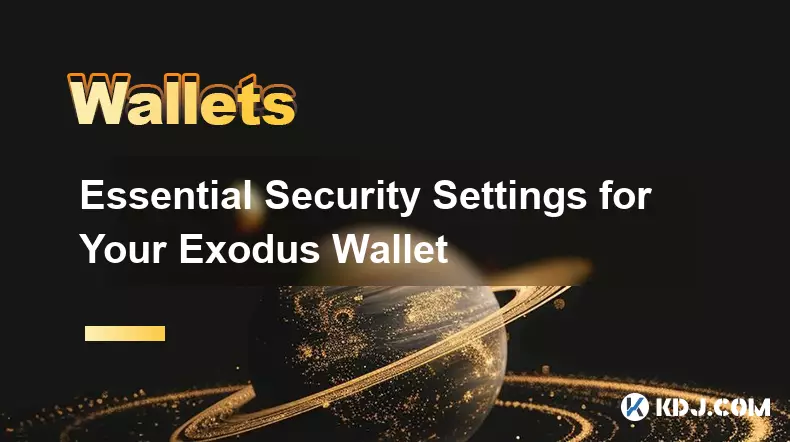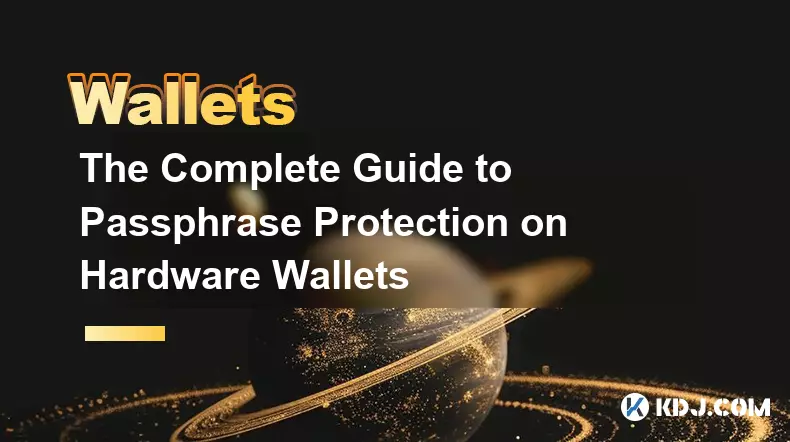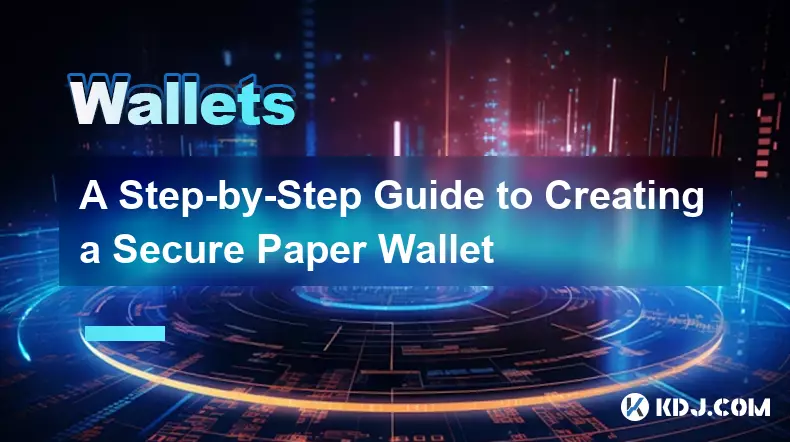-
 bitcoin
bitcoin $99177.955738 USD
-7.32% -
 ethereum
ethereum $3187.183061 USD
-12.38% -
 tether
tether $0.999809 USD
0.00% -
 xrp
xrp $2.117933 USD
-9.42% -
 bnb
bnb $906.710033 USD
-9.17% -
 solana
solana $149.367737 USD
-10.74% -
 usd-coin
usd-coin $0.999816 USD
0.01% -
 tron
tron $0.281498 USD
-0.38% -
 dogecoin
dogecoin $0.156292 USD
-8.00% -
 cardano
cardano $0.500744 USD
-10.19% -
 hyperliquid
hyperliquid $38.087358 USD
-4.58% -
 chainlink
chainlink $14.097831 USD
-8.54% -
 bitcoin-cash
bitcoin-cash $463.329916 USD
-9.22% -
 ethena-usde
ethena-usde $0.999078 USD
-0.01% -
 unus-sed-leo
unus-sed-leo $9.475862 USD
-0.79%
Public vs. Private Keys: A Core Concept for Wallet Security
Public and private keys are essential for cryptocurrency security: the public key is your shareable address, while the private key must stay secret to protect your funds.
Nov 05, 2025 at 03:18 pm

Understanding Public and Private Keys in Cryptocurrency Wallets
1. In the world of cryptocurrency, public and private keys form the foundation of wallet security. These cryptographic keys work together to enable secure transactions and ownership verification without relying on centralized authorities. The public key acts like an address that others can see and use to send funds. It is safe to share and functions similarly to a bank account number.
2. The private key, on the other hand, must remain confidential. It serves as proof of ownership and grants the ability to sign transactions and access funds. Losing access to your private key means losing access to your assets, with no recovery option through a third party. This irreversible nature emphasizes the importance of safeguarding it at all costs.
3. When a user initiates a transaction, their wallet uses the private key to generate a digital signature. This signature proves that the transaction originated from the rightful owner without exposing the private key itself. The network then verifies this signature using the corresponding public key.
4. The relationship between public and private keys is based on asymmetric cryptography. While the public key is derived from the private key through complex mathematical algorithms, it is computationally impossible to reverse the process. This ensures that even if someone has your public key, they cannot deduce your private key.
5. Wallets do not store actual coins; instead, they manage these key pairs and interact with the blockchain to monitor balances and broadcast signed transactions. Understanding this mechanism helps users appreciate why protecting the private key is equivalent to protecting their wealth.
The Risks of Exposing Your Private Key
1. Sharing your private key with anyone, even someone claiming to be from a support team, exposes your entire balance to theft. Scammers frequently pose as customer service agents to trick users into revealing sensitive information. Once a private key is compromised, attackers can drain funds instantly and irreversibly.
2. Storing private keys in unsecured locations such as email, cloud storage, or text files increases vulnerability. Malware and phishing attacks are designed specifically to harvest these keys. A single breach can result in total loss of assets across multiple wallets if the same key is reused.
3. Using online services that require full access to private keys undermines the decentralized principle of self-custody. Custodial wallets may offer convenience but transfer control to third parties. In contrast, non-custodial wallets place responsibility directly on the user, reinforcing the need for personal vigilance.
4. Writing down private keys on paper without proper protection introduces physical risks. Fire, water damage, or unauthorized access can lead to permanent loss. Best practices include using metal backup solutions and storing them in secure, offline environments.
5. QR codes containing private keys should never be photographed or shared digitally. Screenshots can be intercepted by spyware, and social media posts often become permanent records accessible to malicious actors. Always assume anything digital can be copied and exploited.
Best Practices for Key Management
1. Utilize hardware wallets to store private keys offline. These devices sign transactions within a secure environment, ensuring keys never touch an internet-connected system. They provide strong protection against remote hacking attempts while maintaining usability.
2. Enable passphrase protection (also known as a 25th word) on compatible wallets. This adds an extra layer of security beyond the seed phrase, creating a hidden wallet that only appears when the correct passphrase is entered. Even if someone obtains your seed, they cannot access funds without the passphrase.
3. Regularly update firmware and software associated with your wallet. Developers release patches to fix vulnerabilities that could be exploited to extract keys. Outdated systems are prime targets for attackers seeking to compromise older security flaws.
4. Avoid reusing addresses or key pairs across different platforms. Each new transaction should ideally use a fresh address generated from the same seed, reducing traceability and minimizing exposure. Deterministic wallets make this process seamless through hierarchical derivation paths.
5. Conduct test transactions with small amounts before moving large sums. This confirms that your setup works correctly and that you retain full control over sending and receiving capabilities. Mistakes in configuration can lead to lost funds, especially during migrations between wallet types.
Frequently Asked Questions
What happens if I lose my private key? If you lose your private key and do not have a backup such as a seed phrase, access to your cryptocurrency is permanently lost. There is no central authority to recover it, and the funds remain on the blockchain indefinitely, unusable.
Can a public key be used to steal my crypto? No, a public key alone cannot be used to steal funds. It allows others to verify transactions and send you cryptocurrency but does not grant spending authority. The private key is required to authorize transfers.
Is it safe to scan a wallet’s QR code? Scanning a public address QR code to receive funds is safe. However, scanning a QR code that contains a private key is extremely dangerous and should never be done. Such actions risk immediate theft of all associated assets.
How are private keys generated? Private keys are generated using cryptographically secure random number generators. They are typically 256-bit numbers, making brute-force guessing practically impossible due to the vast number of possible combinations.
Disclaimer:info@kdj.com
The information provided is not trading advice. kdj.com does not assume any responsibility for any investments made based on the information provided in this article. Cryptocurrencies are highly volatile and it is highly recommended that you invest with caution after thorough research!
If you believe that the content used on this website infringes your copyright, please contact us immediately (info@kdj.com) and we will delete it promptly.
- ICP Price Trendline Breakout: Eyes on $10 Upside Target?
- 2025-11-05 17:25:01
- Bitcoin Price Dive: Market Sell-Off and Crypto Rollercoaster
- 2025-11-05 17:25:01
- Bitcoin's Bearish Blues: Analysts Assess the Downturn
- 2025-11-05 17:30:01
- Momentum, Hype, Launch: Riding the Crypto Rollercoaster, NYC Style
- 2025-11-05 17:30:01
- Bitcoin, Monero, Crypto Presales: Decoding the Trends and Unearthing Hidden Gems
- 2025-11-05 17:30:01
- Crypto Buys Alert: BullZilla Roars as Cronos Cools Down
- 2025-11-05 17:30:01
Related knowledge

Public vs. Private Keys: A Core Concept for Wallet Security
Nov 05,2025 at 03:18pm
Understanding Public and Private Keys in Cryptocurrency Wallets1. In the world of cryptocurrency, public and private keys form the foundation of walle...

Essential Security Settings for Your Exodus Wallet
Nov 05,2025 at 08:00am
Understanding Exodus Wallet Security Fundamentals1. Exodus is a software wallet that allows users to store, manage, and exchange various cryptocurrenc...

Reviewing Smart Contract Permissions: A Critical Security Step
Nov 01,2025 at 04:55pm
Understanding Decentralized Exchanges in the Crypto Ecosystem1. Decentralized exchanges (DEXs) have reshaped how traders interact with digital assets ...

The Complete Guide to Passphrase Protection on Hardware Wallets
Nov 03,2025 at 10:37am
Understanding Passphrases in Hardware Wallets1. A passphrase, often referred to as a 25th word, adds an additional layer of security beyond the standa...

How to Safely Interact with dApps: A MetaMask Security Tutorial
Nov 04,2025 at 02:54am
Understanding dApp Interaction Risks1. Decentralized applications (dApps) operate on blockchain networks, enabling users to trade tokens, lend assets,...

A Step-by-Step Guide to Creating a Secure Paper Wallet
Nov 05,2025 at 04:39am
Understanding the Basics of a Paper Wallet1. A paper wallet is a physical document that contains the private and public keys of a cryptocurrency addre...

Public vs. Private Keys: A Core Concept for Wallet Security
Nov 05,2025 at 03:18pm
Understanding Public and Private Keys in Cryptocurrency Wallets1. In the world of cryptocurrency, public and private keys form the foundation of walle...

Essential Security Settings for Your Exodus Wallet
Nov 05,2025 at 08:00am
Understanding Exodus Wallet Security Fundamentals1. Exodus is a software wallet that allows users to store, manage, and exchange various cryptocurrenc...

Reviewing Smart Contract Permissions: A Critical Security Step
Nov 01,2025 at 04:55pm
Understanding Decentralized Exchanges in the Crypto Ecosystem1. Decentralized exchanges (DEXs) have reshaped how traders interact with digital assets ...

The Complete Guide to Passphrase Protection on Hardware Wallets
Nov 03,2025 at 10:37am
Understanding Passphrases in Hardware Wallets1. A passphrase, often referred to as a 25th word, adds an additional layer of security beyond the standa...

How to Safely Interact with dApps: A MetaMask Security Tutorial
Nov 04,2025 at 02:54am
Understanding dApp Interaction Risks1. Decentralized applications (dApps) operate on blockchain networks, enabling users to trade tokens, lend assets,...

A Step-by-Step Guide to Creating a Secure Paper Wallet
Nov 05,2025 at 04:39am
Understanding the Basics of a Paper Wallet1. A paper wallet is a physical document that contains the private and public keys of a cryptocurrency addre...
See all articles










































































